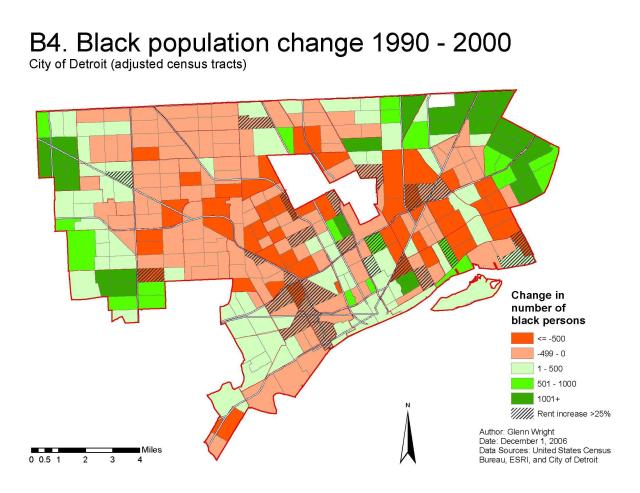Today I went digging through my hard drive for a research paper I wrote in policy school that used structural equations modeling to analyze the 2004 United States presidential election. Sadly, it seems I lost the final version and only have a rough draft. I did, however, find another research paper on population changes in Wayne and Oakland counties (roughly, Detroit and its wealthier suburbs.)
You might find it interesting if you like Detroit or pretty choropleths:
Some mixed, sort-of tooting my own horn: I independently discovered one of the most important urban trends in the United States – the dispersal of poor, urban blacks to inner ring suburbs, which in many ways laid the ground for the recent conflict in Ferguson. Of course, by that time, the professionals had already discovered it.
I also found, in retrospect, absolutely no evidence for gentrification in Detroit from 1990-2000; at the time I worded my conclusion a bit more weakly, probably because no one I talked to wanted to hear this conclusion. Fortunately, I’m coming to care less what others think in my old age. Also in retrospect, the most likely cause of the changes I observed is the Third Great Migration.
I guess I’ll take a stab at explaining the lost structural equations modeling paper as well.